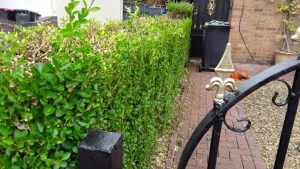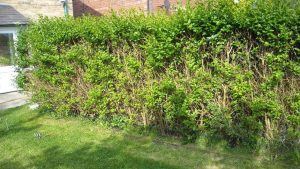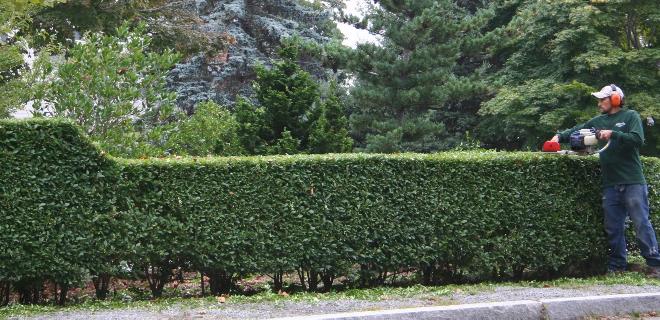When to trim the privet hedge?
Trimming privet hedges is an important part of hedge management that keeps them healthy, neat, and visually pleasing. Proper pruning not only improves the appearance of hedges but also promotes strong growth and longevity. In this complete guide, we will go over the complexities of when to trim the privet hedge, focusing on best practices, optimal time, and vital skills. Whether you’re a seasoned gardener or a newbie enthusiast, knowing when and how to trim privet hedges can have a huge impact on their health and general appearance. Join us as we decipher the complexities of hedge cutting, empowering you to create lush, vibrant hedges that enhance the attractiveness of your outdoor space.
Understanding Privet Hedge Growth Patterns
Privet hedges, which belong to the genus Ligustrum, have diverse growth patterns that are controlled by a variety of factors, including species, climate, and soil conditions. Typically, privet hedges grow quickly, producing dense foliage and rapidly spreading branches. Understanding these growth patterns is critical for proper hedge upkeep and pruning. Different kinds of privet can have diverse growth tendencies, with some growing more compactly than others. Furthermore, environmental factors such as sunshine exposure and moisture levels can affect hedge growth, leading to variances in density and height. By understanding privet hedge growth patterns, gardeners can modify their pruning strategies to promote healthy growth, maintain preferred forms, and attain the desired aesthetics. Whether it’s boosting denser foliage or limiting hedge height, a better understanding of growth patterns allows for more effective hedge management and improves the overall appeal of outdoor settings.
Benefits of Proper Hedge Trimming
Trimming hedges, including privet hedges, have numerous benefits that improve their overall health and aesthetic appeal. For starters, regular trimming promotes thicker foliage and lateral branching, which results in a fuller, more robust hedge. This not only improves the hedge’s appearance but also increases privacy and reduces noise.
Pruning also removes dead or diseased branches, which prevents pests and diseases from spreading throughout the hedge. Gardeners may support a more sustainable gardening strategy by keeping their hedges healthy.

Additionally, well-trimmed hedges keep their desired form and size, preventing them from becoming overgrown and ugly. This helps to maintain neat and manicured landscaping, which improves the property’s overall curb appeal.
Overall, the benefits of effective hedge trimming extend beyond aesthetics, including increased health, function, and sustainability for both the hedge and its surroundings.
Factors Influencing Hedge Trimming Timing
Several crucial aspects influence the growth and overall health of hedges, particularly privet hedges, determining the optimal timing for trimming. One important issue is the hedge’s growth rate, which varies according to species, environmental circumstances, and management procedures. Trimming faster-growing hedges more frequently may be necessary to maintain their intended shape and size. The climate also has a big impact on hedge-cutting timing. Warmer regions may have longer periods of active development, necessitating more frequent trimming to prevent overgrowth and preserve the hedge’s aesthetic attractiveness. Additionally, seasonal fluctuations must be considered when arranging hedge cutting. Trimming hedges during active growth times, such as spring or early summer, promotes regeneration and reduces plant stress. By carefully considering these characteristics, gardeners may identify the best time to trim their hedges, ensuring healthy development and keeping the hedge’s intended appearance throughout the year.
When to trim private hedges?
It is best to trim privet hedges in late winter or early spring before new growth emerges. Trimming privet hedges during this season allows for rejuvenation pruning, which removes dead, damaged, or overgrown branches to promote healthy regrowth.
Trimming privet hedges in late winter or early spring coincides with the hedge’s dormant period, reducing the risk of plant stress and harm. Furthermore, cutting before new growth commences allows the hedge to focus its efforts on developing new foliage, resulting in a fuller, more vivid appearance during the growing season.
Gardeners may promote optimal development, maintain the ideal shape of the privet hedge, and improve its overall health and look throughout the year.

How to trim privet hedge?
Here’s a step-by-step guide for trimming a privet hedge.
Gather your tools: hedge clippers or shears, gloves, safety goggles, a ladder (if needed), and a rake or tarp for clippings.
Select the right time: Trimming a privet hedge is best done in early spring before new growth begins or in late summer or early fall after the growing season has tapered down. Trimming should be avoided under excessive heat or drought conditions.
Evaluate the hedge: Take a step back and consider the hedge’s general shape and size. Determine how much you want to cut off to get the appropriate height and shape.
Begin by pruning the top of the hedge to the desired height. To get a flat or slightly rounded top, use lengthy, sweeping motions with your hedge clippers or shears. Make sure to cut straight across to promote balanced growth.
Cut the sides: Working your way along the hedge, cut any stray branches or uneven growth. Keep the hedge’s sides tapered, with the bottom slightly broader than the top, to allow sunlight to reach the lower branches.
Remove any dead or diseased branches: During trimming, look for any dead, damaged, or diseased branches and remove them with clean cuts to promote healthy development.
Clean up: After you’ve completed trimming, collect the clippings with a rake or tarp and dispose of them correctly. This will help keep pests and illnesses from spreading to the hedge.
Inspect and touch up: Take a step back and inspect the hedge for any places that may require additional trimming or shaping. Make any necessary adjustments to attain the desired appearance.
Maintain regularly: To keep your privet hedge looking its best, prune it at least once or twice a year using the same procedures indicated above. Regular maintenance will help to promote dense growth while also keeping the hedge healthy and beautiful.
By following these procedures, you may trim your privet hedge to keep it in shape, stimulate healthy development, and improve the appearance of your landscape.
Related Posts:
How often should I cut my privet hedges?
For formal hedges that require a neat appearance, trimming may be necessary more often, 4-6 weeks during the growing season. On the other hand, informal or natural may only need trimming once or twice a year to maintain their shape and healthy growth
Faqs
Q: How often should I cut my privet hedges?
Privet hedges should be trimmed once or twice a year to keep their shape and density. However, the frequency will vary according to the hedge’s growth rate and intended appearance.
Q: What equipment should I use to prune a privet hedge?
To trim a privet hedge, you’ll need pruning shears, hedge trimmers, and potentially a ladder to reach the tallest branches. Make sure your tools are clean and sharp for the best outcomes.
Q: Can I trim my privet hedge into various shapes?
A: You can shape your privet hedges in a variety of ways, but avoid excessive trimming as it may harm the plants. Instead, concentrate on presenting a natural, homogeneous appearance.
Q: What do I do if my private hedge grows overgrown?
A: If your privet hedge grows overgrown, gradually trim it back over several sessions to avoid straining the plants. Focus on reducing extra growth while maintaining the hedge’s structure.
Is it necessary to fertilize privet hedges after trimming?
A: After pruning your privet hedges, consider using a balanced fertilizer to promote healthy regrowth. Follow the label directions and prevent overfertilizing, since this can cause nutrient imbalances.
Conclusion
To summarize, learning the best procedures for cutting privet hedges is critical for their health, look, and longevity. Gardeners can keep their hedges looking healthy and gorgeous all year by following proper timing, procedures, and avoiding common blunders. Trimming privet hedges in late winter or early spring provides for rejuvenating pruning while reducing plant stress. This encourages healthy regrowth and maintains a lush, dense hedge throughout the growing season. Furthermore, utilizing sharp tools, taking safety precautions, and avoiding over-pruning are essential for maintaining the hedge’s integrity and supporting optimal development. Gardeners that incorporate these tactics into their hedge maintenance routines can reap the benefits of well-trimmed privet hedges, such as better curb appeal, increased privacy, and a more appealing landscape overall. With the right care and attention, privet hedges may grow and become the main point of any outdoor space, enriching the environment and delighting visitors for years to come.




